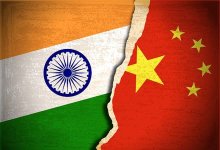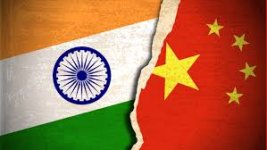Recent political dynamics between India and China continue to be dominated by an uneasy mix of economic interdependence and simmering geopolitical rivalry. While trade volumes remain significant, the underlying tensions, particularly along the disputed border, frequently erupt into public view. A particularly sharp flashpoint in recent weeks has been China's persistent and provocative action of unilaterally "renaming" places within the Indian state of Arunachal Pradesh. This move, vehemently rejected by New Delhi, underscores the deep-seated mistrust and competing territorial claims that define this crucial bilateral relationship.
For years, China has laid claim to Arunachal Pradesh, referring to it as "South Tibet." This territorial assertion forms a core part of the larger, unresolved boundary dispute along the vast Line of Actual Control (LAC). Beijing periodically releases lists with Sinicized names for various locations – including towns, villages, rivers, and mountains – within Arunachal Pradesh. India has consistently and unequivocally dismissed these actions as "absurd" and a "vain attempt" to alter the reality on the ground. New Delhi maintains that Arunachal Pradesh is, and always will be, an integral and inalienable part of India.
The latest round of renaming by China in May 2025 has reignited public debate and diplomatic exchanges. While some analysts view these actions primarily as a tactic by Beijing to reinforce its territorial claims and signal its displeasure with India's growing infrastructure development in border areas, others see it as a deliberate provocation designed to test India's resolve and distract from domestic issues. Regardless of the primary motivation, these unilateral naming exercises are counterproductive to the stated goal of both nations to maintain peace and tranquility along the border.
Critics argue that such moves by China demonstrate a lack of respect for established diplomatic norms and further erode the already fragile trust built over decades of complex negotiations. How can genuine de-escalation and normalization proceed when one party resorts to cartographic aggression? This "name game" is more than just symbolic; it reflects a deeper strategic competition for influence and control in the Himalayan region.
Beyond the border, the India-China relationship is a multifaceted tapestry woven with threads of economic ties, technological competition, and differing visions for regional and global order. India's significant trade deficit with China remains a point of concern, highlighting dependencies in critical sectors. Simultaneously, both nations are vying for influence in neighboring countries and international forums, adding layers of complexity to their interactions.
While there have been periods of apparent de-escalation and dialogue following the serious clashes in Galwan Valley in 2020, the underlying structural issues persist. The lack of a clearly demarcated and mutually accepted border, coupled with competing strategic ambitions, ensures that the relationship will likely remain a delicate balancing act for the foreseeable future. China's continued assertive actions, such as the renaming of places in Arunachal Pradesh, serve as a constant reminder of the potential for renewed friction and underscore the challenges in achieving a truly stable and cooperative relationship between the two Asian giants. The question for policymakers and observers alike is how to manage these recurrent tensions and prevent symbolic provocations from escalating into more serious confrontations on the Himalayan chessboard.
For years, China has laid claim to Arunachal Pradesh, referring to it as "South Tibet." This territorial assertion forms a core part of the larger, unresolved boundary dispute along the vast Line of Actual Control (LAC). Beijing periodically releases lists with Sinicized names for various locations – including towns, villages, rivers, and mountains – within Arunachal Pradesh. India has consistently and unequivocally dismissed these actions as "absurd" and a "vain attempt" to alter the reality on the ground. New Delhi maintains that Arunachal Pradesh is, and always will be, an integral and inalienable part of India.
The latest round of renaming by China in May 2025 has reignited public debate and diplomatic exchanges. While some analysts view these actions primarily as a tactic by Beijing to reinforce its territorial claims and signal its displeasure with India's growing infrastructure development in border areas, others see it as a deliberate provocation designed to test India's resolve and distract from domestic issues. Regardless of the primary motivation, these unilateral naming exercises are counterproductive to the stated goal of both nations to maintain peace and tranquility along the border.
Critics argue that such moves by China demonstrate a lack of respect for established diplomatic norms and further erode the already fragile trust built over decades of complex negotiations. How can genuine de-escalation and normalization proceed when one party resorts to cartographic aggression? This "name game" is more than just symbolic; it reflects a deeper strategic competition for influence and control in the Himalayan region.
Beyond the border, the India-China relationship is a multifaceted tapestry woven with threads of economic ties, technological competition, and differing visions for regional and global order. India's significant trade deficit with China remains a point of concern, highlighting dependencies in critical sectors. Simultaneously, both nations are vying for influence in neighboring countries and international forums, adding layers of complexity to their interactions.
While there have been periods of apparent de-escalation and dialogue following the serious clashes in Galwan Valley in 2020, the underlying structural issues persist. The lack of a clearly demarcated and mutually accepted border, coupled with competing strategic ambitions, ensures that the relationship will likely remain a delicate balancing act for the foreseeable future. China's continued assertive actions, such as the renaming of places in Arunachal Pradesh, serve as a constant reminder of the potential for renewed friction and underscore the challenges in achieving a truly stable and cooperative relationship between the two Asian giants. The question for policymakers and observers alike is how to manage these recurrent tensions and prevent symbolic provocations from escalating into more serious confrontations on the Himalayan chessboard.


